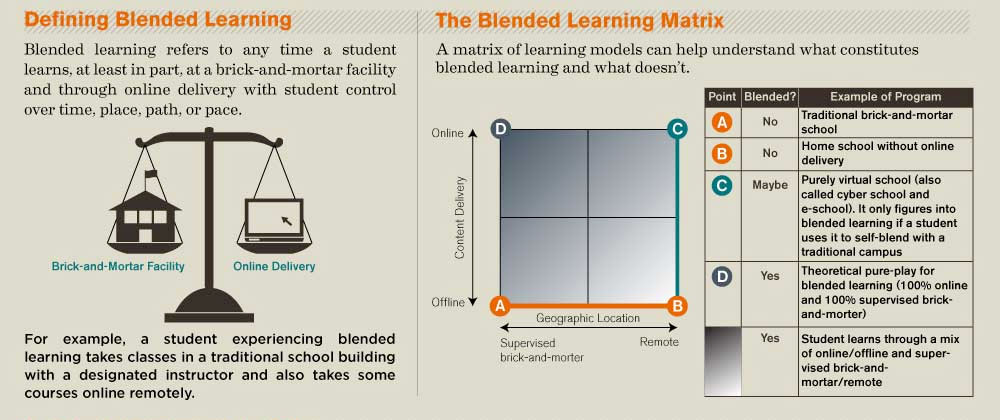Blended Learning
17 What is Blended Learning?
Chapter Objectives
- Define blended learning
- Survey various models of blended learning
- Identify opportunities and benefits to a blended learning approach
- Start to consider feasible pedagogical approaches for blended learning
 Observe & Consider
Observe & Consider
What is Blended Learning?

Blended learning is a course design approach that fundamentally restructures class hours and the course environment by integrating face-to-face and online interaction. Blended learning leverages the strengths of online and face-to-face interactions to promote student engagement and help achieve the learning goals of the course. The blended learning course design process focuses on:
- Developing a conscious, pre-planned, and streamlined blended course plan unique for your course
- Questioning what is necessary to do in the classroom and how face-to-face hours are best used
- Thinking outside the box of both the traditional in-class lecture and only online-based learning
- Redesigning based on learning goals and expected student outcomes, rather than content
- Focusing on active student learning and collaboration
- Sustaining an engaged classroom community beyond the confines of a traditional classroom
 Share & Connect
Share & Connect
Word Association Activity
What words come to mind when you hear “blended learning”? List any and all below, and we will collect these into a word cloud to show our collective word associations with blended learning!
Loading…
Media Attributions
- 3-modesB
- photo1-web
- 3-modesC

